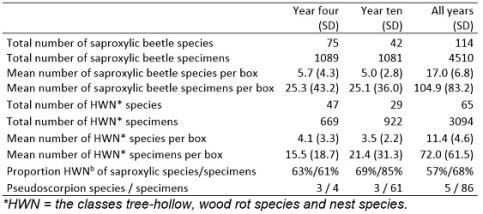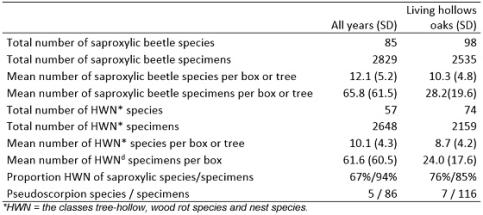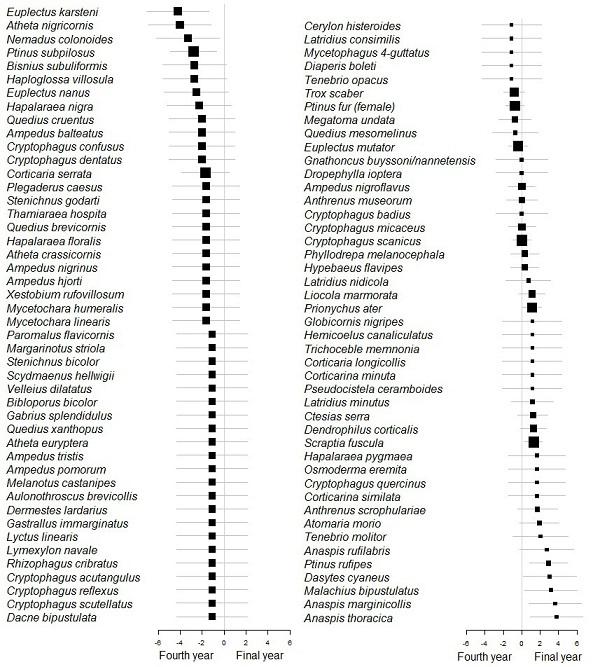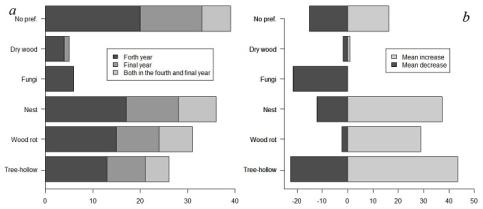Results

In total, 4510 specimens of 114 saproxylic beetle species were collected from the boxes during all years (Table 1). The most species-rich box had 30 species and the box with the least amount of saproxylic beetles had six species. Specimens ranged from 17 to 319 per box.
There was a decline from 75 to 42 saproxylic beetle species among the 1089 and 1081 specimens caught in the fourth year and the final year, respectively. In total, 65 different tree-hollow species, wood rot species and nest species were found. The specimens in these categories increased with 38% from the fourth year to the final year. There was a high increase of pseudoscorpion specimens from the fourth to final year but the species count remained unchanged.

The mean number of saproxylic beetle species and specimens per box and the mean number of tree-hollow/wood rot/nest species and specimens were higher in the boxes than in the hollow oaks (Table 2). The proportion of tree-hollow, wood rot and nest species of saproxylic beetle specimens was higher for the boxes than the hollow oaks. The total amount of pseudoscorpion species and specimens were lower in the boxes than in the hollow oaks.
Both time and DFCA had significant effects on the saproxylic species assemblage but not the interaction between time and DFCA (P = 0.011, P = 0.002 and P = 0.276, respectively; manyGLM, data not shown). The composition of species in the boxes was more similar to the hollow oaks when the boxes where set close to the dispersal source (NMDS, figure is available in the full article).
Boxes with a dead hen were somewhat richer in species than boxes with the other substrates, although neither substrate nor the interaction substrate*time had significant effects on the species (manyGLM, data not shown).
Of the 91 saproxylic beetle species that were sampled in the eclector traps, 61.5% and 30.7% had higher frequency of occurrence in the fourth and final year, respectively (Figure 3). There was a species richness decrease in all categories from the fourth year to the final year but there was an increase in abundance in the categories tree-hollow species, wood rot species and nest species (Figure 4).


Responsible for this page:
Director of undergraduate studies Biology
Last updated:
05/11/15
